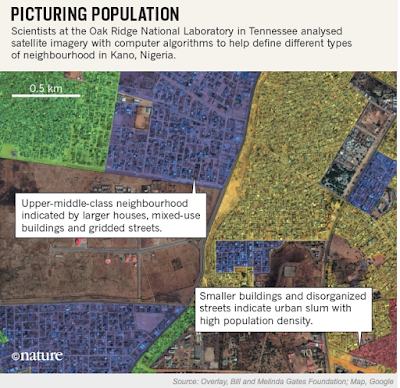Nigerian health officials won’t have to rely on flawed, decade-old census data when they plan deliveries of the measles vaccine next year. Instead, they will have access to what may be the most detailed and up-to-date population map ever produced for a developing country.
The Gates Foundation began its mapping project after encountering problems while distributing polio vaccines in Nigeria: millions of doses would be sent to areas where they weren’t needed and would disappear, while other areas suffered shortages. The foundation teamed up with researchers at Oak Ridge and the University of Southampton, UK, in 2013 to produce the first high-resolution maps of Nigeria’s northern states. The group completed those in 2015, and next month it group will make public its first country-wide map.
The plot reveals villages that weren’t included in Nigeria’s most recent census, in 2006, and shows that many urban areas are more populated than the census data indicated, says Vince Seaman, an epidemiologist and interim deputy director of data and analytics for global develop-ment at the Gates Foundation. “This has the potential to change the whole game,” he says. “For all of the different vaccines in Nigeria, it could save US$1 billion in a space of a few years.”The scale is much grander, but this is the same type of work that I and my colleagues have been doing since 1998, first in Egypt, and more recently in Ghana. Indeed, the image below from the Gates project in Nigeria could easily be mistaken for some that we have created for Accra, the capital of Ghana.

No comments:
Post a Comment